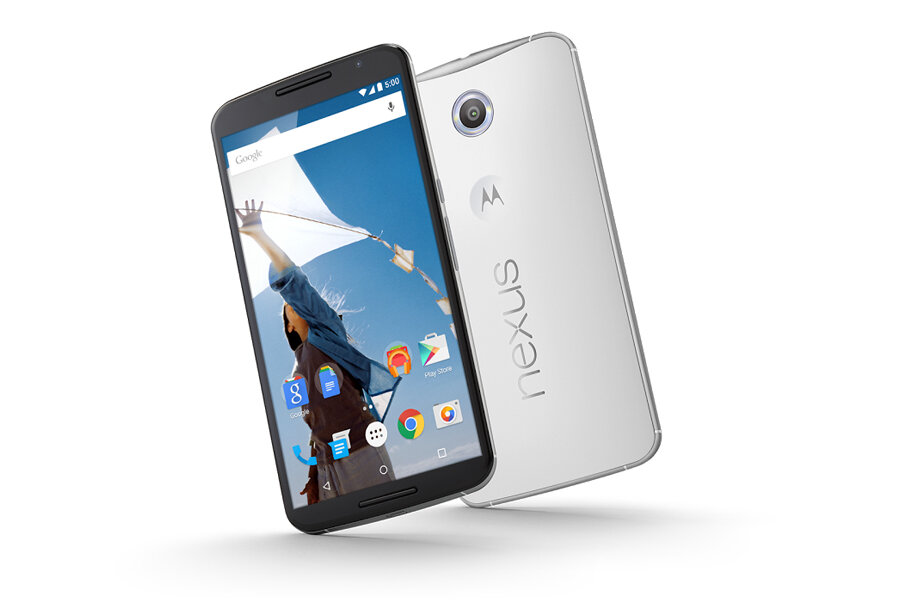Google's powerhouse Nexus 6 phone runs big, expensive
Loading...
Google’s newest smart phone, the Nexus 6, will be released Thursday, but pre-orders begin today.
The Nexus 6 sports a screen that measures 6 inches diagonally and is definitely a “phablet” by that fact alone. Its dimensions exceed Samsung’s latest Galaxy Note 4 at 5.7 inches and the iPhone 6 Plus at 5.5 inches.
The phone starts out at $649 for 32 GB models and goes up to $699 for 64 GB models, plus the cost of shipping. It comes in two colors: midnight blue and cloud white.
The price point is a major departure from what the Nexus line used to be: a scrappy budget choice. The previous Nexus 5 phone retailed for $350, but its screen also measured at a more average 4.95 inches.
The phone still holds onto a few things that distinctly make it a Nexus phone.
Like its predecessors, the phone will come unlocked and usable on US and global carriers, and should work for the big four carriers in the United States (Verizon, AT&T, Sprint, and T-Mobile).
Also like its predecessors, it runs an unmodified version of the latest Android update, Lollipop, for which users will be able to receive over-the-air updates directly from Google, which power users tout as a solution to Android’s oft-cited fragmentation problem.
The battery is unremovable, the storage is unexpandable, and the back of the phone features its signature Nexus branding. But this time it’s also sporting a Motorola logo along with a camera in the center, making the phone’s form factor and finishes strikingly similar to the Moto X.
This isn’t to say all of the phone is derivative. Google is including a number of bells and whistles with the phone. New purchases give you six free months of Google Play Music unlimited, Google’s music streaming service. The battery also has a higher capacity to account for the larger size. With 3,220 mAh compared to the Nexus 5’s 2,300 mAh, the bigger battery gives the phone a purported all-day battery life.
The phone also comes with a Motorola Turbo Charger, which Google says gives the phone six hours of battery life after only 15 minutes of charging.
The phone has a 13 megapixel rear camera with 2 megapixel front camera, which is a definite improvement over the Nexus 5’s 8 megapixels. While the larger sensor may make up for some of the Nexus line’s perennial camera quality problems, it likely won’t stand up to the quality that Samsung’s Galaxy S5 or iPhone 6 can output.
It’s unclear whether or not Google will continue to upsize its flagship model in response to an international market that’s increasingly for larger phones, but if the iPhone 6 Plus and Nexus 6 are of any indication, flagship phones are quickly marching into phablet territory.
But will users be able to adapt? Dieter Bohn of The Verge says yes, and that it might be impossible to go back after adopting a phablet. But pockets can only be so big, and wallets can only go so deep.







